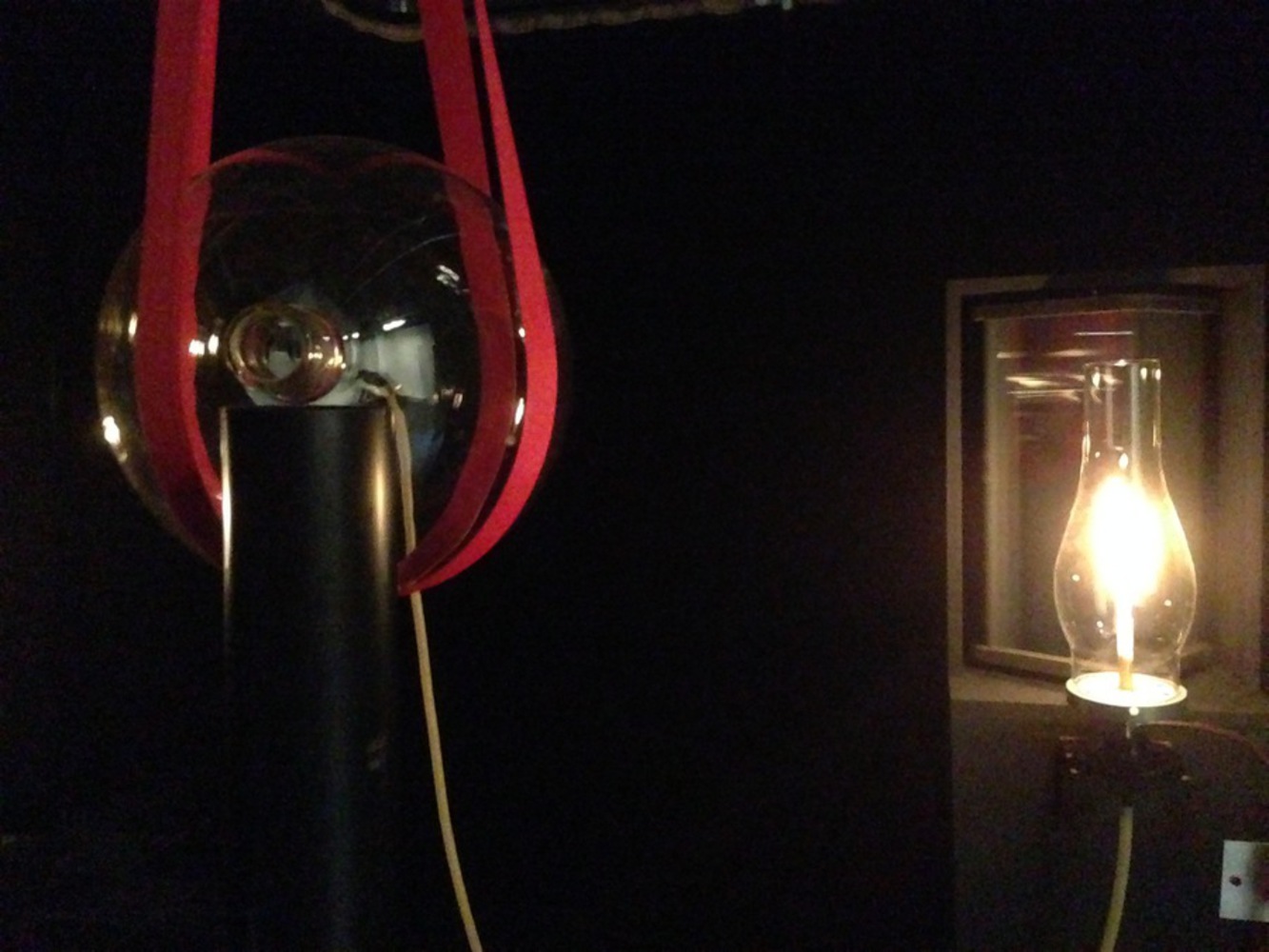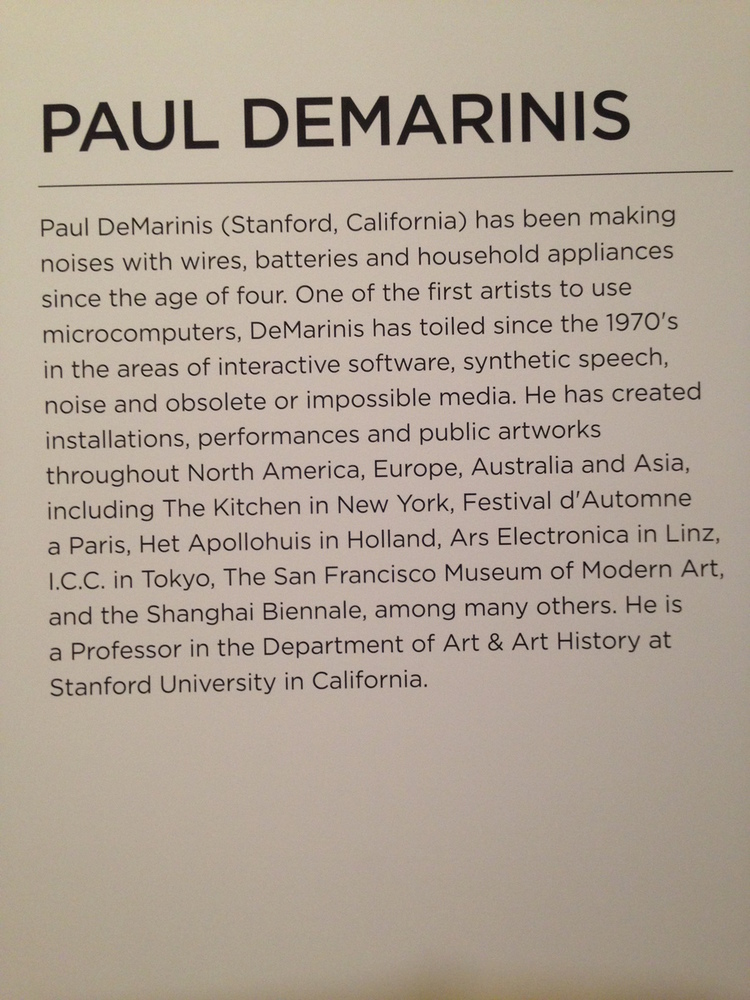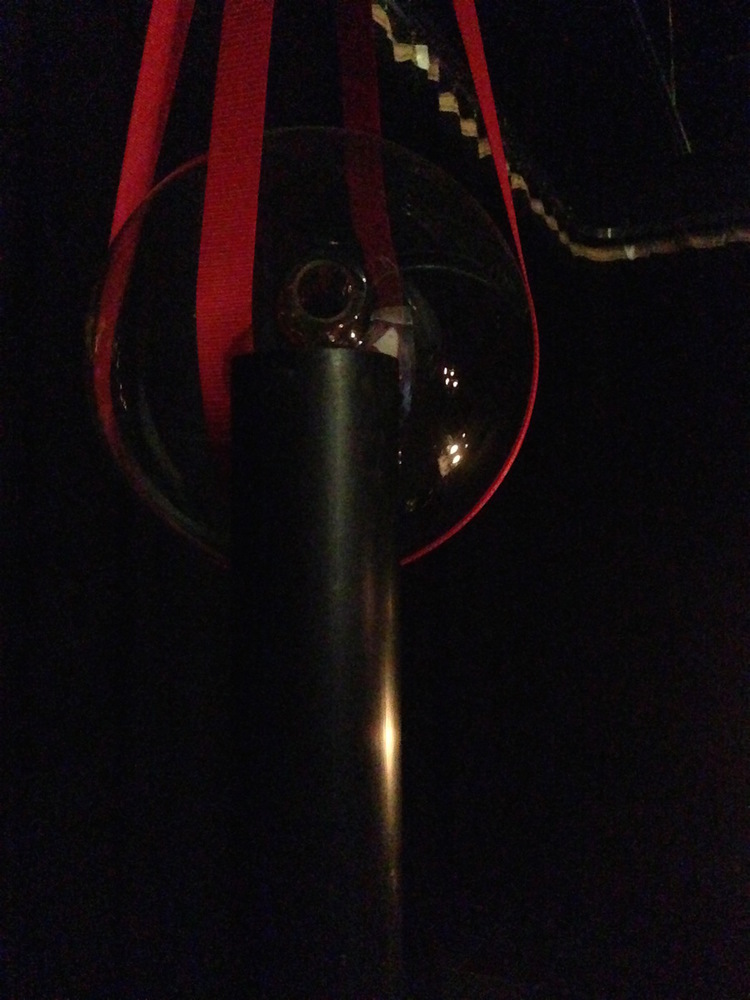Friday afternoon, I spent about an hour at the Miller Gallery. I'd known it was there since Freshman year and really wanted to go for a while, but somehow it faded from memory and I never visited the place before the exhibition I was interested in closed. It's unfortunate, but this Friday I got to see a lot of very interesting artworks dealing with sound in particular. It's not my forte when it comes to art, but it's definitely one of the most interesting and novel to me, having ever only been to one other art gallery concerned with the subject of sound.
Outcome
Entering the Miller Gallery, this was the first artwork, the most attention-grabbing, captivating thing present (right after greeting the gallery receptionist/caretaker). I visited the whole of the gallery that day, but I just had to return to this one.
The inner first floor was dark, so the moving flames instantly took the limelight. Initial impressions were overwhelming curiosity and amusement. Clearly something was going on with this exhibition - it wasn't just some idle or unresponsive, flat piece hung on the wall - it was a moving, curated installation seemingly with some special purpose. There was a low, rhythmic sound coming from the installation, and this was especially exciting and intriguing to me. I eventually realised that the sound could be heard most clearly from the glass apparatus, as you can see in the right of the picture above.
There were actually two sets of the installation - two lit lamps, and two glass apparatuses hung from above by red material. The other glass apparatus, not pictured above, was set at a higher level, almost out of my ear's reach. I amused myself tiptoeing at one apparatus and then sidling to the lower one to catch the different rhythmic sounds coming from each.
The kind receptionist/caretaker sitting right next to the installment was kind enough to explain the art piece after a while. The reverberating sound occurring every so often begun to sound like a heartbeat, and I had become most inquisitive. She explained to me that computer-generated bass sounds were being fed into the black tubes, and then travelled through the yellow tubes to the flame, causing the flame to dance about erratically.
Another curious thing I noted was how the flame seemed to split into two prongs. At first, it looked like the second, less prominent prong might actually be a reflection of the first prong in the glass, but then the two prongs would occasionally dance in opposite directions, and I realised that this could not be the case if one were actually a reflection of the other. This seemed to be true for both the setups.
It had been observed that flames would move according to ambient sound, and Demarinis made chief use of this observation in this artwork. The observation was first made, apparently, while in some church while a choir was proceeding - or so I was told. When it's really quiet, a particularly low humming (like the one you can hear while in an airplane) can be heard. Unfortunately, the heater was on, so I wasn't able to hear this.
Apparently, the receptionist/caretaker was sitting there on the first floor in case of the museum catching fire due to that particular artwork. She had more to say about it, as well: the spinning mirrors behind the lamps were supposed to capture the moment as the flame danced to the rhythms, apparently. I found the mirrors to spin rather too fast for them to be of much use or interest in that sense, but staring at the flame directly allowed me to see that at each "heartbeat" of the sounds, the flame would shoot up ever so slightly as though bouncing to the beat.
The installation really was quite beautiful, thinking back and looking at these photos. There's something about hanging glass in a dark room. And of course, the flames. It has a rather surreal and calm, serene feel to it. The effect might have been better if it were set up in a large, otherwise empty room - the first floor area was quite small, to be honest.
I began to feel like a scientist as I walked about the edge of the installation, making observations of the setup and scribbling away little notes in the small notebook I had brought for this purpose. For example, I noted that the mirrors appeared to spin at different speeds in each setup, but upon closer inspection I realised this was simply a trick of the eye - the mirror appears to spin slower when viewed from the front, but from the side one sees each side of the mirror switching more rapidly, and therefore it seems to rotate faster when viewed from that angle.
Over time, I also noticed how the tempo of the heartbeat-like sounds would vary, and sometimes even disappear entirely. It would segue from heartbeat-like, regular thumps to lower frequency hums, and vice versa. Suddenly drum-like sounds would appear for a very brief moment, especially from the taller setup, and this was very funny to me. The new sound left as soon as it came, and I never heard it a second time the entire time I was there.
I had a longer video, but either the size was too large, or it had somehow gotten corrupted during the transfer. It doesn't seem like the above attachments are playing, though, so perhaps something has gone wrong with the upload.
In any case though, it was a very interesting setup with a very interesting concept behind it - I'd never really thought about how sound might affect the movement of flames - I suppose it makes sense, since sound is the vibration of air, and of course flames are affected by the movement of air particles. I just hadn't realised to what extent. The low frequency sounds coming from the tubes made me wonder, how the flames would behave with shriller sounds? Perhaps the vibrations would be too weak to cause much change of note.. or maybe just unpleasant to the ears!
I guess color scheme wise it makes sense - there's the darkness, and then of course the yellows and oranges and reds of the flames. I added a noise/dissolve filter to express the poor vision and faint, low humming sounds you can hear while near this installation - the very faint circles represent vague bell-like chimes I can hear when I watch the mirrors spin, it's like flashing lights of a light tower out a sea, with chimes of train bells or maybe ship bells. There's an emphasis towards the left of the picture, which kind of symbolizes my initial surprise and curiosity towards the piece - you could say there's a bit of chronological sequence of my representation of the art experience, just like the sound waves in the background being read from left to right. The white sequence of squares also represent the spinning mirrors - seeing the little glass bulb with dancing flames in them reminded me of those olden-day films and slide-show projectors that used flames for lighting - so the positioning of the white squares rather reflects that as well, making the whole piece also seem like a reel of film or photographs of some sort - the spinning mirrors would catch an instant of the flames before darting and changing to another mirror flash - quite evocative of the flashing lights of a camera.
Other elements which I drew in (but may not be so visible in the darkness) were the hanging red ribbons holding up the glass apparatuses. I thought these were quite important to the piece as well, since they added this floating and surreal feel to the work, which I rather liked. The idea of swaying glass pieces can be seen from the positioning of the circular shapes in my piece - there's a bit of back-and-forth with the circles, which I achieved by varying the soft/hardness of the brush and of course, their positions. Rather like Kandinsky's Several Circles again, but much less complicated.
Towards the end there's a flare up of colours again - this is not merely for the framing effects, but also for representing the small uplifting of mood as I prepared to leave the installation. I had been concentrating for a while, trying to find more things out about the installation and moving here and there trying to listen for the changing computer-generated sounds. I left feeling quite satisfied with my find, feeling like I had learned something. It definitely felt like an educational experience. There was a very science-experiment-like setup feel to it, with all the flames and glass apparatus, and the mysterious low humming sounds of machines.
If I wish I had done better, it'd be my inability to represent the hanging glass apparatuses very well. I haven't got a great idea for making abstract hints of glass, unfortunately. There's a very transparent feel to them, something I've never gotten the hang of when it comes to visual arts.
If I had to recommend a piece of music that would go with this installation, it might be Drive (Grundfunken) by Neu!
Like the art piece, it has a repetitive, low frequency sort of humming quality to it. The more upbeat drum parts are like the fire, bouncing up and down according to the sound/music.
You can upload files of up to 20MB using this form.




